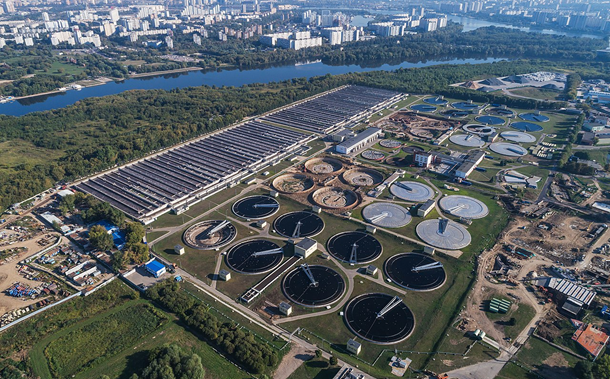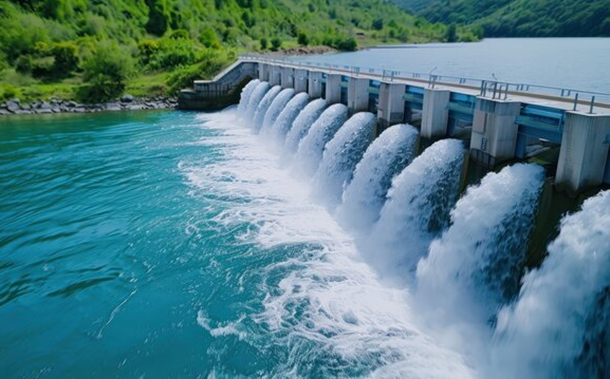Impact of Climate Change on Crops Productivity Using MODIS-NDVI Time Series
Downloads
Doi:10.28991/CEJ-2022-08-06-04
Full Text:PDF
Downloads
[2] Yin, H., Udelhoven, T., Fensholt, R., Pflugmacher, D., & Hostert, P. (2012). How normalized difference vegetation index (NDVI) trends from advanced very high resolution radiometer (AVHRR) and système probatoire d'observation de la terre vegetation (SPOT VGT) time series differ in agricultural areas: An inner Mongolian case study. Remote Sensing, 4(11), 3364–3389. doi:10.5829/idosi.mejsr.2012.12.3.64113.
[3] McFarland, T. M., & Van Riper, C. (2013). Use of Normalized Difference Vegetation Index (NDVI) habitat models to predict breeding birds on the San Pedro River, Arizona. US Department of the Interior, US Geological Survey, Reston, United States. Available online: https://pubs.usgs.gov/of/2013/1100/ (accessed on February 2022).
[4] Gu, Y., & Wylie, B. K. (2015). Downscaling 250-m MODIS growing season NDVI Based on multiple-date Landsat images and data mining approaches. Remote Sensing, 7(4), 3489–3506. doi:10.3390/rs70403489.
[5] Huang, S., Tang, L., Hupy, J. P., Wang, Y., & Shao, G. (2021). A commentary review on the use of normalized difference vegetation index (NDVI) in the era of popular remote sensing. Journal of Forestry Research, 32(1). doi:10.1007/s11676-020-01155-1.
[6] Jackson, R. D., & Huete, A. R. (1991). Interpreting vegetation indices. Preventive Veterinary Medicine, 11(3–4), 185–200. doi:10.1016/S0167-5877(05)80004-2.
[7] Shareef, M. E., & Abdulrazzaq, D. G. (2021). River flood modelling for flooding risk mitigation in Iraq. Civil Engineering Journal, 7(10), 1702-1715. doi:10.28991/cej-2021-03091754.
[8] Shimelis, B. G., Merkel, B., & Agumassie, T. A. (2015). Land use and land cover dynamics in the dry Lake Haramaya Watershed in eastern Ethiopia using remote sensing. FOG - Freiberg Online Geoscience, 43, 33–49.
[9] Zaitunah, A., Samsuri, Ahmad, A. G., & Safitri, R. A. (2018). Normalized difference vegetation index (ndvi) analysis for land cover types using landsat 8 oli in besitang watershed, Indonesia. IOP Conference Series: Earth and Environmental Science, 126, 012112. doi:10.1088/1755-1315/126/1/012112.
[10] Marshall, M., & Thenkabail, P. (2015). Advantage of hyperspectral EO-1 Hyperion over multispectral IKONOS, GeoEye-1, WorldView-2, Landsat ETM+, and MODIS vegetation indices in crop biomass estimation. ISPRS Journal of Photogrammetry and Remote Sensing, 108, 205–218. doi:10.1016/j.isprsjprs.2015.08.001.
[11] Gandhi, G. M., Parthiban, S., Thummalu, N., & Christy, A. (2015). Ndvi: Vegetation Change Detection Using Remote Sensing and Gis – A Case Study of Vellore District. Procedia Computer Science, 57, 1199–1210. doi:10.1016/j.procs.2015.07.415.
[12] Hashim, H., Abd Latif, Z., & Adnan, N. A. (2019). Urban vegetation classification with ndvi threshold value method with very high resolution (vhr) pleiades imagery. The International Archives of the Photogrammetry, Remote Sensing and Spatial Information Sciences, XLII-4/W16, 237–240. doi:10.5194/isprs-archives-xlii-4-w16-237-2019.
[13] Aburas, M. M., Abdullah, S. H., Ramli, M. F., & Ash'aari, Z. H. (2015). Measuring Land Cover Change in Seremban, Malaysia Using NDVI Index. Procedia Environmental Sciences, 30, 238–243. doi:10.1016/j.proenv.2015.10.043.
[14] Ozyavuz, M., Bilgili, B. C., & Salici, A. (2015). Determination of vegetation changes with NDVI method. Journal of environmental protection and ecology, 16(1), 264-273.
[15] Gong, P., Chen, Z., Tang, H., & Zhang, F. (2006). Land Cover Classification Based on Multi-temporal MODIS NDVI and LST in Northeastern China. 2006 IEEE International Symposium on Geoscience and Remote Sensing. doi:10.1109/igarss.2006.297.
[16] Viana, C. M., Girí£o, I., & Rocha, J. (2019). Long-term satellite image time-series for land use/land cover change detection using refined open source data in a rural region. Remote Sensing, 11(9). doi:10.3390/rs11091104.
[17] Somayajula, V. K. A., Ghai, D., & Kumar, S. (2021). Land Use/Land Cover Change Analysis using NDVI, PCA2021 5th International Conference on Computing Methodologies and Communication (ICCMC). doi:10.1109/ICCMC51019.2021.9418025.
[18] Ehsan, S., & Kazem, D. (2013). Analysis of land use-land covers changes using normalized difference vegetation index (NDVI) differencing and classification methods. African Journal of Agricultural Research, 8(37), 4614–4622. doi:10.5897/ajar11.1825.
[19] Bhandari, A. K., Kumar, A., & Singh, G. K. (2012). Feature extraction using Normalized Difference Vegetation Index (NDVI): A case study of Jabalpur city. Procedia technology, 6, 612-621. doi:10.1016/j.protcy.2012.10.074.
[20] Müller-Hansen, F., Cardoso, M. F., Dalla-Nora, E. L., Donges, J. F., Heitzig, J., Kurths, J., & Thonicke, K. (2017). A matrix clustering method to explore patterns of land-cover transitions in satellite-derived maps of the Brazilian Amazon. Nonlinear Processes in Geophysics, 24(1), 113–123. doi:10.5194/npg-24-113-2017.
[21] Othman, A.A., Shihab, A.T., Al-Maamar, A.F., Al-Saady, Y.I. (2020). Monitoring of the Land Cover Changes in Iraq. Environmental Remote Sensing and GIS in Iraq. Springer Water. Springer, Cham, Switzerland. doi:10.1007/978-3-030-21344-2_8.
[22] Amano, H., & Iwasaki, Y. (2020). Land Cover Classification by Integrating NDVI Time Series and GIS Data to Evaluate Water Circulation in Aso Caldera, Japan. International Journal of Environmental Research and Public Health, 17(18), 6605. doi:10.3390/ijerph17186605.
[23] Foroumandi, E., Nourani, V., Dabrowska, D., & Kantoush, S. A. (2022). Linking Spatial–Temporal Changes of Vegetation Cover with Hydroclimatological Variables in Terrestrial Environments with a Focus on the Lake Urmia Basin. Land, 11(1), 115. doi:10.3390/land11010115.
[24] Javed, T., Li, Y., Rashid, S., Li, F., Hu, Q., Feng, H., ... & Pulatov, B. (2021). Performance and relationship of four different agricultural drought indices for drought monitoring in China's mainland using remote sensing data. Science of the total environment, 759, 143530. doi:10.1016/j.scitotenv.2020.143530.
[25] Sruthi, S., & Aslam, M. A. M. (2015). Agricultural Drought Analysis Using the NDVI and Land Surface Temperature Data; a Case Study of Raichur District. Aquatic Procedia, 4, 1258–1264. doi:10.1016/j.aqpro.2015.02.164.
[26] Lv, X. (2014). Remote sensing, normalized difference vegetation index (NDVI), and crop yield forecasting. Master Thesis, University of Illinois at Urbana-Champaign, Champaign, United States. Available online: https://www.ideals.illinois.edu/items/46610 (accessed on February 2022).
[27] Bellón, B., Bégué, A., Lo Seen, D., de Almeida, C., & Simíµes, M. (2017). A Remote Sensing Approach for Regional-Scale Mapping of Agricultural Land-Use Systems Based on NDVI Time Series. Remote Sensing, 9(6), 600. doi:10.3390/rs9060600.
[28] Kyei-Mensah, C., Kyerematen, R., & Adu-Acheampong, S. (2019). Impact of Rainfall Variability on Crop Production within the Worobong Ecological Area of Fanteakwa District, Ghana. Advances in Agriculture, 2019, 7. doi:10.1155/2019/7930127.
[29] Saleh, A. M., & Ahmed, F. W. (2021). Analyzing Land Use/Land Cover Change Using Remote Sensing and GIS in Mosul District, Iraq. Annals of the Romanian Society for Cell Biology, 4342-4359.
[30] Meza-Pale, P., & Yúnez-Naude, A. (2015). The Effect of Rainfall Variation on Agricultural Households: Evidence from Mexico. International Conference of Agricultural Economists, August 9-14, 2015, University of Degli Studi Di Milano, Milan, Italy.
[31] Modi, P. A., Fuka, D. R., & Easton, Z. M. (2021). Impacts of climate change on terrestrial hydrological components and crop water use in the Chesapeake Bay watershed. Journal of Hydrology: Regional Studies, 35. doi:10.1016/j.ejrh.2021.100830.
[32] Jägermeyr, J., Müller, C., Ruane, A. C., Elliott, J., Balkovic, J., Castillo, O., ... Rosenzweig, C. (2021). Climate impacts on global agriculture emerge earlier in new generation of climate and crop models. Nature Food, 2(11), 873–885. doi:10.1038/s43016-021-00400-y.
[33] Amnuaylojaroen, T., & Parasin, N. (2022). The Future Extreme Temperature under RCP8.5 Reduces the Yields of Major Crops in Northern Peninsular of Southeast Asia. Scientific World Journal, 2022. doi:10.1155/2022/1410849.
[34] Hayder A. (2020). Modeling of Stream Flow and Sediment Yield for Some Watersheds of Tigris and Euphrates Rivers by Using SWAT. PhD Thesis, Water and Hydraulic Structures Engineering Branch, University of Technology Department of Civil Engineering, Iraq.
[35] Reuter, H. I., Nelson, A., & Jarvis, A. (2007). An evaluation of void-filling interpolation methods for SRTM data. International Journal of Geographical Information Science, 21(9), 983–1008. doi:10.1080/13658810601169899.
[36] Ministry of Water Resources-Iraq (MWR). (2022). The Strategic Study for Iraqi Water Resources and Lands. (In Arabic). Available online: http://www.mowr.gov.iq/?q=node/902 (accessed on April 2022).
[37] Ministry of Agriculture (2022). Time schedules for vegetables, grains and fruits, Ministry of Agriculture - Statistics Department, Iraq. Available online: www.zeraa.gov.iq (accessed on April 2022).
[38] Ministry of Agriculture and Water Resources (2022). Horticulture Department Kurdistan, Kurdistan Region, Iraq. Available online: https://gov.krd/moawr-en/ (accessed on May 2022).
[39] United Nations Development Programme (2019). Analysis on Crops, Water Resources and Irrigation, and Selected Value Chains. Review of the Agricultural Sector in the Kurdistan Region of Iraq, 1-95. Available online: https://info.undp.org/docs/pdc/Documents/IRQ/Agricultural%20Study%20-KRI%202019.pdf (accessed on April 2022).
[40] Huete, A., Didan, K., van Leeuwen, W., Miura, T., Glenn, E. (2010). MODIS Vegetation Indices. In: Ramachandran, B., Justice, C., Abrams, M. (Editors) Land Remote Sensing and Global Environmental Change. Remote Sensing and Digital Image Processing, vol 11. Springer, New York, United States. doi:10.1007/978-1-4419-6749-7_26.
[41] Justice, C. O., Vermote, E., Townshend, J. R. G., Defries, R., Roy, D. P., Hall, D. K., ... Barnsley, M. J. (1998). The Moderate Resolution Imaging Spectroradiometer (MODIS): land remote sensing for global change research. IEEE Transactions on Geoscience and Remote Sensing, 36(4), 1228–1249. doi:10.1109/36.701075.
[42] Wardlow, B. D., & Egbert, S. L. (2010). A comparison of MODIS 250-m EVI and NDVI data for crop mapping: A case study for southwest Kansas. International Journal of Remote Sensing, 31(3), 805–830. doi:10.1080/01431160902897858.
[43] Hentze, K., Thonfeld, F., & Menz, G. (2016). Evaluating crop area mapping from modis time-series as an assessment tool for Zimbabwe's "fast track land reform programme”. PLoS ONE, 11(6). doi:10.1371/journal.pone.0156630.
[44] Jia, K., Liang, S., Wei, X., Yao, Y., Su, Y., Jiang, B., & Wang, X. (2014). Land cover classification of Landsat data with phenological features extracted from time series MODIS NDVI data. Remote Sensing, 6(11), 11518–11532. doi:10.3390/rs61111518.
[45] MODIS (2022). Moderate Resolution Imaging Spectroradiometer. NASA. Available online: https://modis.gsfc.nasa.gov/about/ (accessed on May 2022).
[46] LAADS DAAC (2022). The Level-1 and Atmosphere Archive & Distribution System (LAADS) Distributed Active Archive Center (DAAC). NASA. Available online: https://ladsweb.modaps.eosdis.nasa.gov/search/ (accessed on May 2022).
[47] Frenken, K. (2009). Irrigation in the Middle East region in figures AQUASTAT Survey-2008. Water Reports, (34).
[48] Ministry of Transportation (2020). Climatic data for the Sulaymaniyah station for the period 2000-2020. Iraqi Metrological and Organization Seismology, Baghdad, Iraq.
[49] Song, C., Chen, J. M., Hwang, T., Gonsamo, A., Croft, H., Zhang, Q., ... & Li, J. (2015). Ecological characterization of vegetation using multisensor remote sensing in the solar reflective spectrum. Remote sensing handbook, 2, 533-575, CRC Press, Boca Raton, United Staes.
[50] Chuvieco, E. (1998). El factor temporal en teledetección"¯: evolución fenomenológica y análisis de cambios. Revista de Teledetección, 10, 1–9. http://telenet.uva.es/promotores/revista/revista_10/AET10_4.pdf
[51] Gandhi, G. M., Parthiban, S., Thummalu, N., & Christy, A. (2015). Ndvi: Vegetation Change Detection Using Remote Sensing and Gis - A Case Study of Vellore District. Procedia Computer Science, 57, 1199–1210. doi:10.1016/j.procs.2015.07.415.
[52] Dagnachew, M., Dagnachew, M., Kebede, A., Moges, A., & Abebe, A. (2020). Effects of Climate Variability on Normalized Difference Vegetation Index (NDVI) in the Gojeb River Catchment, Omo-Gibe Basin, Ethiopia. Advances in Meteorology, 2020, 16. doi:10.1155/2020/8263246.
[53] Nanzad, L., Zhang, J., Tuvdendorj, B., Nabil, M., Zhang, S., & Bai, Y. (2019). NDVI anomaly for drought monitoring and its correlation with climate factors over Mongolia from 2000 to 2016. Journal of Arid Environments, 164, 69–77. doi:10.1016/j.jaridenv.2019.01.019.
[54] MaŠ¡ková, Z., Zemek, F., & KvÄ›t, J. (2008). Normalized difference vegetation index (NDVI) in the management of mountain meadows. Boreal Environment Research, 13, 417-432.
[55] Rawat, S., & Biswas, B. (2016). Monitoring Recent Variations of Surface Displacement of Forest Cover Using NDVI Calculation-Case Study of Kheragarh Tehsil of Agra District. IOSR Journal of Humanities and Social Science, 21(6), 14-20. doi:10.9790/0837-2106021420.
[56] Roger, J. C., Vermote, E. F., & Ray, J. P. (2015). MODIS Surface Reflectance User's Guide. Collection 6, MODIS Land Surface Reflectance Science Computing Facility, Version 1.4. Available online: https://modis-land.gsfc.nasa.gov/pdf/MOD09_UserGuide_v1.4.pdf (accessed on February 2022).
[57] Turral, H., Burke, J., & Faurès, J. M. (2011). Climate change, water and food security, 36. Food and agriculture organization of the United Nations (FAO), Rome, Italy.
- Authors retain all copyrights. It is noticeable that authors will not be forced to sign any copyright transfer agreements.
- This work (including HTML and PDF Files) is licensed under a Creative Commons Attribution 4.0 International License.![]()














